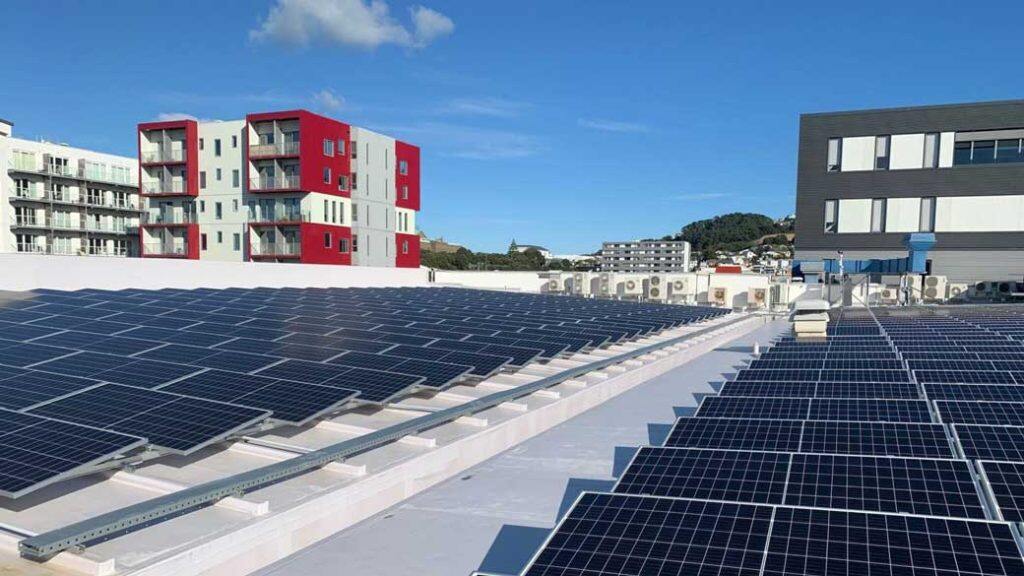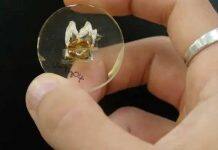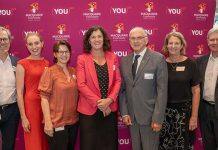Over 400 new solar panels are now generating electricity for Te Wānanga Waihanga-Hoahoa Wellington Faculty of Architecture and Design Innovation, at Te Herenga Waka—Victoria University of Wellington’s campus on Vivian St.


The photovoltaic (PV) arrays, which convert sunlight into electricity are part of the University’s Zero Carbon Plan which includes the installation of more on-site renewable electricity generation.
“When we scheduled the upgrade of the Vivian St roof, we were very happy to be able to include the installation of PV arrays in the scope. As a University dedicated to sustainability, this was a perfect opportunity,” says Associate Director, Asset Management Patrick Homan.
Dean of Wellington Faculty of Architecture and Design Innovation (WFADI), Professor Robyn Phipps says, “Sustainability is front and centre of our teaching and research and we are embracing all opportunities to lead sustainability for the built environment through our actions and mahi.”
The system was connected on 2 July this year, and over a month since then, the array has produced over 61.6MWh of electricity. This is the equivalent to the amount of electricity five regular homes would use in one year, which is doubly remarkable as July has the lowest sunshine hours of the year.
Overall, the University expects that the electricity produced will lower the building’s demand from the power grid considerably, and that up to 21 metric tonnes of carbon dioxide per year will be saved from being released into the environment.
“One of the key tenets of the Zero Carbon Plan is to use our campuses as a living lab to provide a test bed for climate action research,” says Director of Sustainability, Andrew Wilks. To this end, this project has allowed for extra space on the roof racks. This will allow members of Te Wāhanga Ahunui Pūkaha Wellington Faculty of Engineering’s sustainable energy systems to test the performance of new innovations in PV technology.
Chair of Sustainable Energy Systems Professor Alan Brent explains, “New bifacial PV panels allow for sunlight to be captured on both sides of the panels, and the colour and texture of the surface area below these panels influences potential power gains. Using the provided rack space, the SES group will experiment with various surface areas to understand these gains and how they might apply to different uses of PV arrays in Aotearoa New Zealand.
“We will also be comparing the performance of fixed tilt in comparison to sun-tracking configurations of PV arrays.”
WFADI’s building science research groups will also complete research based on the PV arrays.
The design and configuration of the PV arrays was decided with input from the University’s Asset Management and Sustainability groups working alongside WFADI and the Faculty of Engineering.
A digital display indicating the electricity generation via the PV arrays is set to be placed in the foyer of the building, allowing the next generation of Building Science and Architecture students to see an example of best practice as they enter the building each day.
There are two buildings on the Kelburn campus that have solar power, and they will be joined by the Living Pā project once that is complete. The Living Pā will aim to achieve net positive energy using solar panels.








































